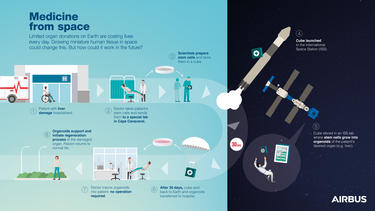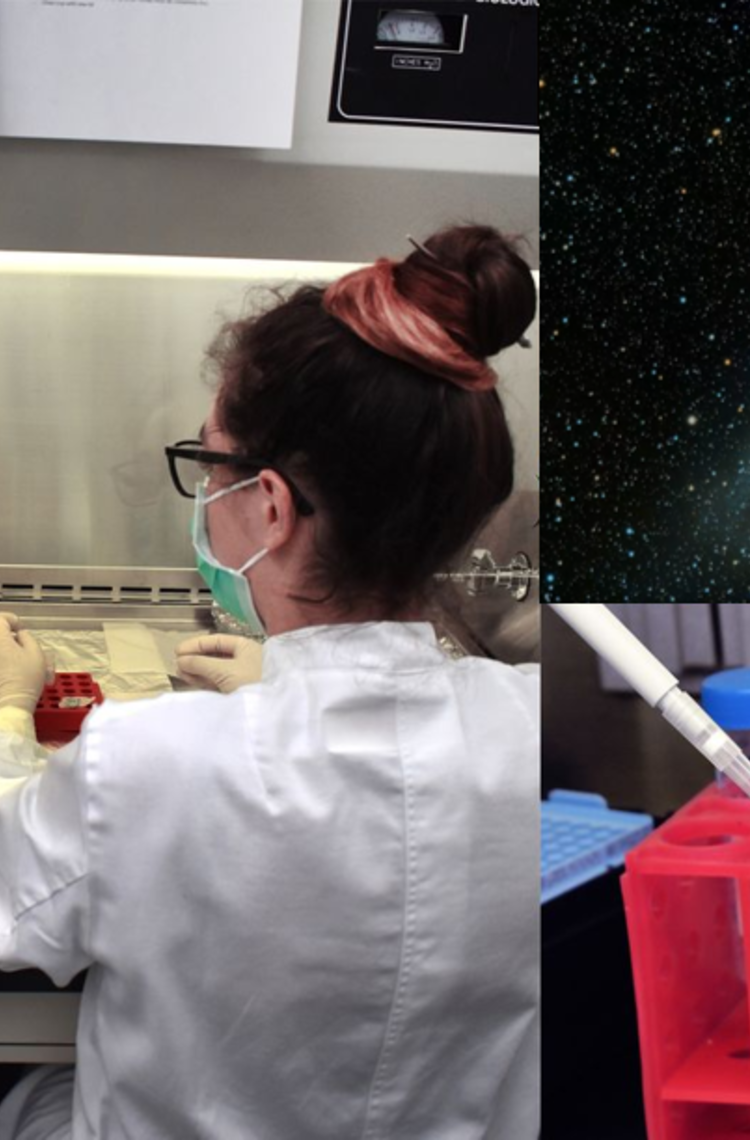If Julian Raatschen and his colleagues have their way, many lives of people with damaged organs could be saved. And animal testing could be drastically reduced. That's not just talk. Julian is part of a team of University of Zurich scientists led by Oliver Ullrich and Airbus Innovation specialists that could revolutionise medicine on Earth within the next decade - by growing human tissue in space.

Julian, where did the idea come from?
It all started when a group of scientists of the University of Zurich and Airbus Innovation specialists put their heads together in 2018. We wanted to show that producing large amounts of human tissue in space with less complexity is feasible. While the University of Zurich is responsible for the biological concept, Airbus takes care of the space operations.
So, does it work?
We made it happen twice already, both times onboard the International Space Station (ISS). Initially in March 2020, when we developed organ-like liver, bone and cartilage structures from human adult stem cells. Then once again last November. We used tissue stem cells from three women and two men of different ages to test our method’s robustness when using cells of different biological variability. This proved easier and more reliable in microgravity than when grown on Earth due to the effects of gravity. Now, we want to bring the technology to operational maturity.
How will it improve the quality of life on Earth?
Space grown 3D organoids - cells mimicking organ functionality - have the potential to revolutionise medicine on Earth. They could be used as building blocks to replace the tissue of damaged organs without the need for operations - and help save many lives of people that have been waiting in vain for one of the limited donor organs. But that’s not all…
What else?
Pharmaceutical companies could also do toxicological studies directly on human tissue. Animal testing could then be drastically reduced in the future. Prescription drug development would also be less expensive, allowing Pharma companies to do drug research for very rare diseases affecting just a handful of people in the world. All this could improve personal medication and regenerative therapies.
That almost sounds too good to be true. When do you expect all this to become a reality?
It’s happening right now. Pharma companies could use our Organoids already to try to lower their drug development costs. Tailor-made patient treatments based on 3D organoids should be possible in the next 5 years, regenerative medicine and the curing of damaged organs, could happen within the 8-10 years.
Latest News
Continue Reading

Airbus ships fourth European Service Module for Artemis IV
Press Release
Space
Fourth European Service Module (ESM-4) is ready to leave Airbus’ facilities in Bremen, Germany, and be shipped to NASA’s Kennedy Space Center, Florida, USA
Sentinel-1D: the radar that never sleeps
Web Story
Space

Airbus-built SpainSat NG-II secure communications satellite successfully launched
Press Release
Space

Airbus, Leonardo and Thales sign Memorandum of Understanding to create a leading…
Press Release
Company

Tracking air pollution from space
Web Story
Space
